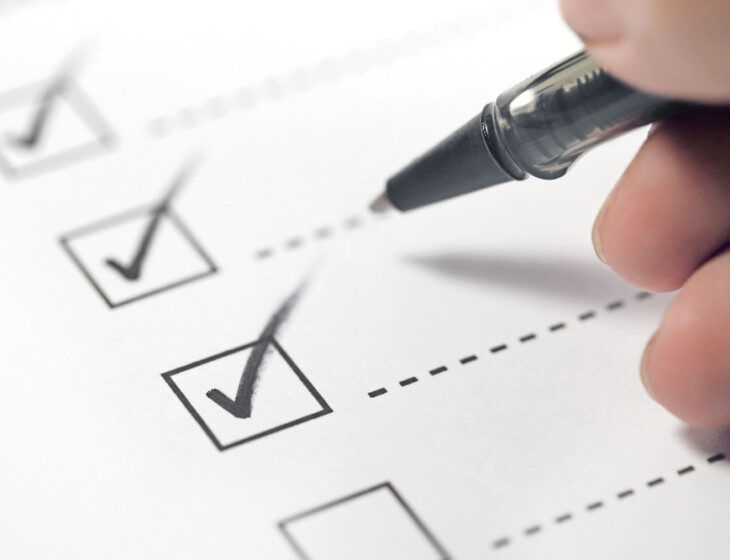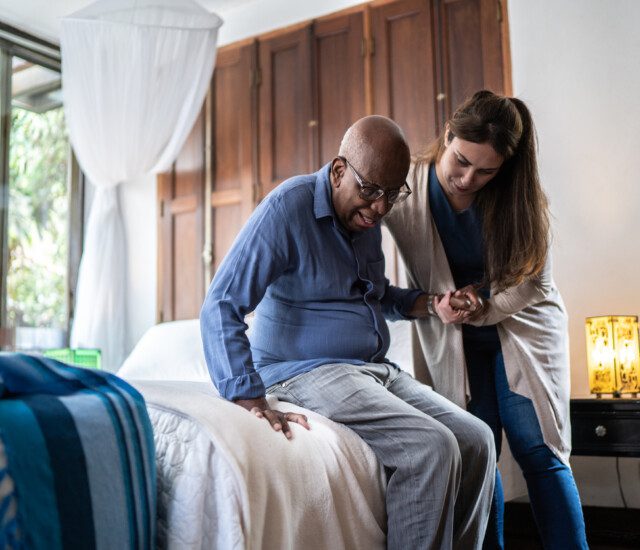For most of us, our days start out the same: We get up, use the restroom, eat some breakfast, get dressed and fix our hair or makeup – though not necessarily in that order. And without realizing it, we’ve successfully completed what are commonly referred to as Activities of Daily Living or ADLs. But why are these basic activities so important that they’ve been gathered together and given a name? Because they’re a big part of determining whether someone is able to live independently without the need for additional care or would likely fare better in an assisted living community. In this blog post, we’ll take a closer look at the six basic ADLs as well as other independence indicators called Instrumental Activities of Daily Living or IADLs. Finally, we have an Activities of Daily Living checklist you can download to help you assess your parent’s or loved one’s ability to continue living independently.
Activities of Daily Living (ADLs)
There are several activities of daily living (ADLs) that help assess whether an older adult can or should continue living on their own. Long-term care insurance companies and Medicaid often complete an activities of daily living checklist to verify needs before paying for additional care or an assisted living community.
In the 1950s, geriatrician Sidney Katz developed the concept of ADLs to help health care providers measure patients’ ability to perform these tasks following a stroke or other disabling conditions. Katz’s goal was to restore patients to as much independence as possible. But first, he needed to determine what “independence” looked like. His checklist of activities of daily living is still used today.
Here are Katz’s six activities of daily living:
Bathing
Able to completely bathe oneself, or needs help cleaning a single part of the body.
Dressing
Can pick out appropriate clothing and get dressed. Help may be used to tie shoes.
Toileting
Able to use the restroom without help, including getting on and off the toilet and cleaning after use, taking off and putting on clothes.
Transferring
Can get in and out of a chair or bed without help, excluding mechanical transferring aids.
Continence
Able to completely control bladder and bowels.
Eating
Can eat without assistance, though food may be prepared for them.
Instrumental Activities of Daily Living (IADLs)
While ADLs are considered essential for personal survival, IADLs help us live life to the fullest. These are activities that allow us to contribute to our communities and be completely self-reliant in our care and health.
Someone struggling with IADLs doesn’t necessarily need assisted living, but they may need help performing these tasks every now and then. This is when friends, family members or home health providers step in to give assistance when needed.
Here are eight instrumental activities of daily living:
Using the telephone
Able to answer the phone and call friends, family or other well-known contacts.
Shopping
Can handle all purchases without assistance.
Food preparation
Able to plan, prepare, and serve all meals and snacks.
Housekeeping
Can complete light household tasks with or without help.
Laundry
Able to complete some or all personal laundry.
Mode of transportation
Can drive oneself or arrange transportation with or without assistance.
Responsibility for own medications
Able to take the appropriate amount of medication at the correct time without supervision or prompting.
Managing finances
Can handle some or all finances with little to no help.
Our activities of daily living checklist
If you’re wondering if your parent or loved one needs additional care, our activities of daily living checklist is a great place to start. You can also fill out the brief contact form below and one of our helpful sales counselors would be happy to talk further about assisted living at the Stayton.


